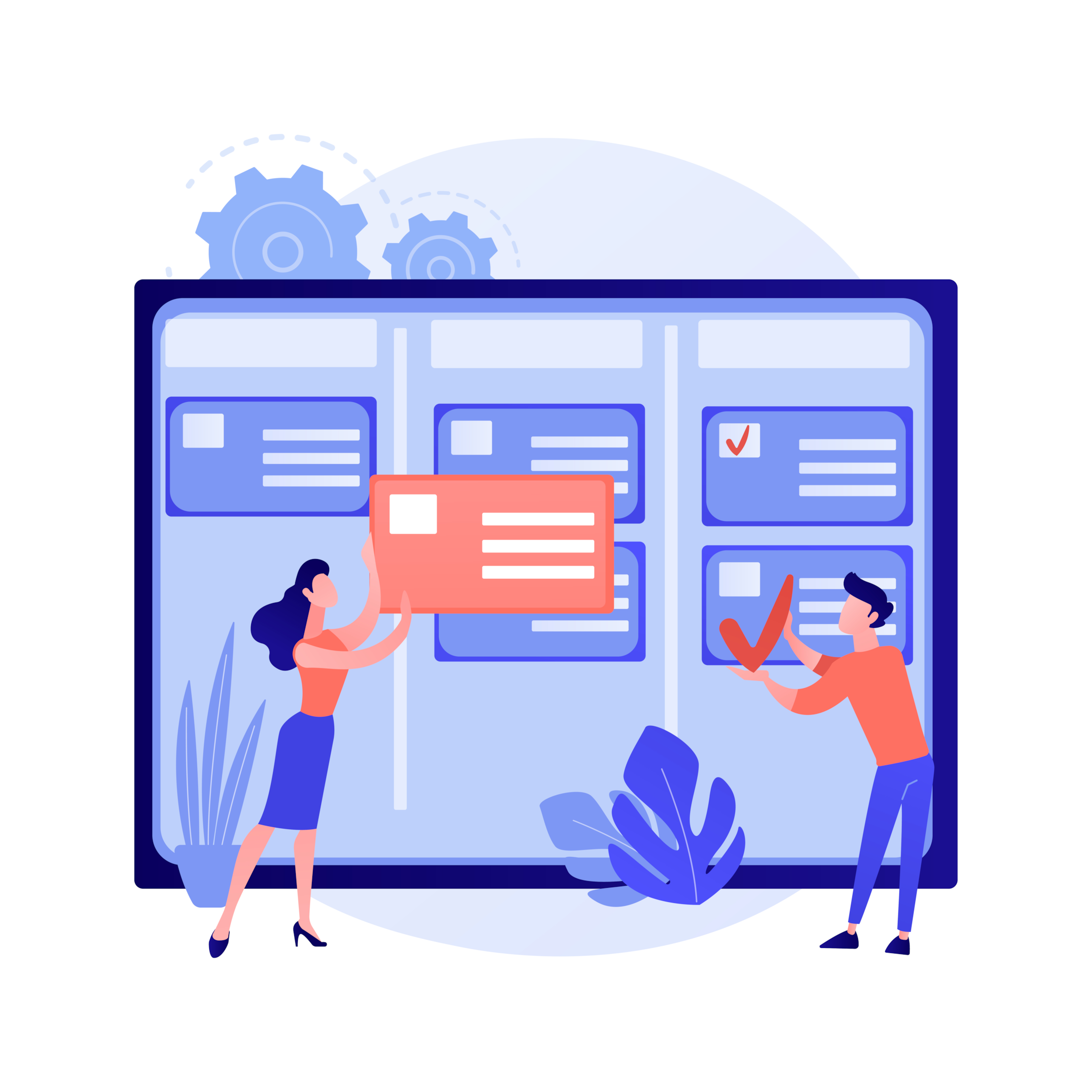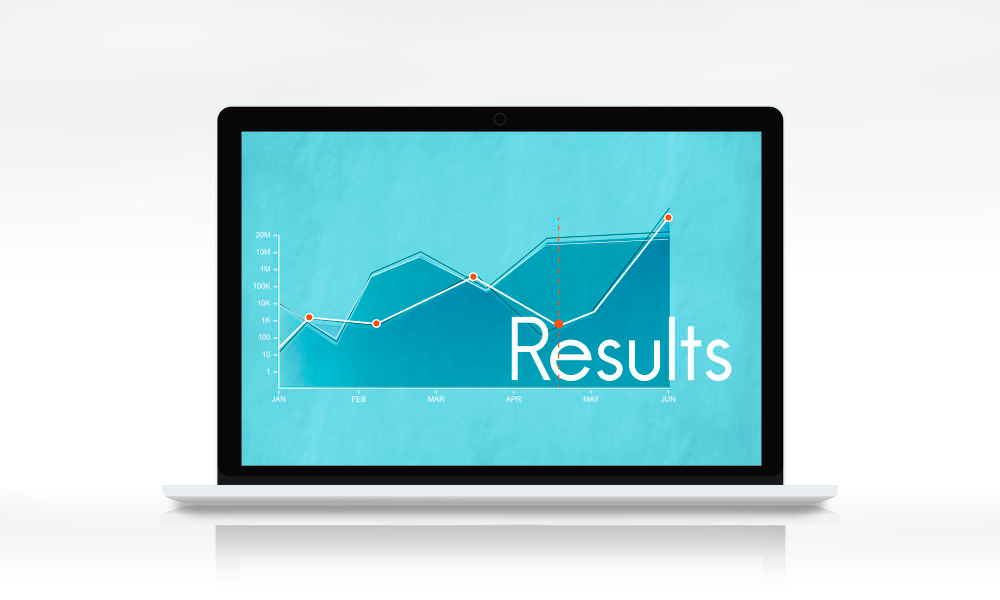We’ll increase conversions by
20-100+%
on your website.
Get a FREE Audit today
See how we can help your business increase conversion rates
Conversion Rate Optimization Best Practices

What is Conversion Rate Optimization?
Conversion Rate Optimization is an essential part of any website’s success. By analyzing user behavior, customer feedback, and website traffic data, businesses can identify areas for improvement that will help them increase the number of visitors who complete their desired action on a given landing pages – be it making a purchase or signing up for membership.
From these insights come changes such as enhanced UX features, creative design elements, and succinct messaging which all contribute to creating websites with higher conversion rates into paying customers!
As technology and customer behavior continue to evolve, businesses must remain agile. CRO is a dynamic process that helps companies stay ahead of the competition by testing new strategies and refining existing ones – from e-commerce sites to B2B service providers.
With the right optimization techniques in place, you can unlock valuable insights into how customers interact with your products or services for maximum impact on your bottom line!
Importance of CRO
Conversion Rate Optimization (CRO) is a valuable tool for any business, helping them to increase their website’s performance by optimizing the user experience and maximizing conversion rates.
Utilizing CRO gives businesses access to new levels of marketing insights that can help inform decisions about product design, pricing models, and content strategies – ultimately leading to more customer conversions!
- Boost your bottom line! Utilizing website optimization techniques can help you more effectively turn casual visitors into paying customers, giving an immediate return on investment.
- CRO helps businesses unlock the potential of their specific website more traffic – leading to bigger and better returns on marketing investments. Invest in CRO today and reap the rewards!
- For businesses, Customer Relationship Optimization (CRO) presents an efficient way to identify and address customers’ needs. By leveraging customer behavior data and feedback, CRO helps organizations design better experiences for their customers – creating a more enjoyable journey from beginning to end!
- Don’t fall behind in the online world! Taking advantage of Conversion Rate Optimization (CRO) can help you stand out from your competitors by delivering a superior user experience and supercharging conversion rates.
- Dramatically increase customer growth with CRO. Put your website visitors to work, as Conversion Rate Optimization helps convert more of them into paying customers – broadening the scope and reach of your business in no time!
- Easily strengthen your brand image and expand online visibility with a top-notch website experience crafted through CRO! Streamlined user navigation, optimized page designs, and customized visuals are all tools to help craft the perfect digital impression.
CRO is an invaluable component of digital marketing that can be the difference between success and failure for a business. Implementing it strategically will ensure maximum growth potential, so don’t let this potentially game-changing opportunity pass you by!
1.) Understanding your audience and their behavior

A. Identifying the target audience
Understanding who you are trying to reach through cro program is essential. Being able to focus on creating an enticing website experience for a specific set of visitors increases the likelihood they will take your desired action, such as making purchases or filling out forms.
To identify and target potential customers accurately, here’s what can help:
- An effective way to maximize your company’s success is through customer segmentation. By separating customers into different groups based on age, activities, and preferences, you can customize marketing efforts that better resonate with each demographic.
- Having a detailed buyer persona is key to understanding who your ideal customers are and how you can best serve them. By taking customer data and feedback into account, you’ll be able to create comprehensive profiles of the people most likely attracted by your business offerings!
- Unlock the secrets of your audience! Analyzing website data can provide you with valuable insights into user behaviour and demographics, helping to ensure your content is better tailored for maximum engagement.
- Collecting customer feedback is one of the key components to any successful business. Leverage surveys, focus groups, and other methods to gain valuable insights into your customers’ behaviors and preferences—that way you can better serve their needs!
- Take the time to explore your competitors’ target audiences and discover creative opportunities in their strategies. Use this knowledge to uncover potential gaps in the market while creating an approach tailored just for you!
Understanding your audience is key to a successful marketing strategy. By taking the time to get to know who you’re targeting, not only will you optimize your website journey and see better results but also increase conversion rates and maximize investment returns!
B. Conducting user research and surveys
CRO is an invaluable tool for businesses looking to boost their online presence. User research and surveys are critical components of this process, helping companies gain valuable insights into the needs and motivations of their target audience so website improvements can be made with maximum impact!
To get the most out of user research & surveys, here are some best practices you should consider:
- Figuring out the best research method for your project can be a tricky task! Consider narrowing down your options by deciding between online surveys, focus groups and customer interviews- each bringing unique advantages to gain meaningful insights.
- Get the information you need to meet your research goals. Understand customer preferences and uncover any pain points they may be experiencing with an in-depth inquiry.
- Choosing the ideal sample for your research is critical. Make sure it accurately reflects who you are targeting and that there’s enough of them to make results statistically sound!
- Don’t be afraid to ask for more – survey and research responses don’t have to fit into neat boxes. By using open-ended inquiries, you can get valuable insights that provide a much richer story than multiple choice questions alone.
- Taking the time to study your data can revolutionize user experience. From website navigation and design changes to new features – analyzing survey or research results provides powerful insights on how best optimize user satisfaction.
Uncovering the needs and desires of your target audience is essential to making informed decisions that will convert visitors into customers.
Through diligent user research, surveys, and analysis you can gain actionable insights which can help propel changes to your website’s performance and marketing success.
C. Analyzing website data and behavior patterns
Understanding website performance is essential for Conversion Rate Optimization (CRO). By analyzing visitor data and behavior, businesses can make informed decisions about their websites and identify areas where changes are needed.
Here are some of the top techniques to help them get started:
- Tap into web analytics tools to gain a better understanding of your visitors – where they come from, how long their session lasts and what content resonates most with them. Unlock the power of Google Analytics or similar platforms to track website traffic, user interaction trends and conversion rates for more meaningful insights on digital performance.
- Get a clearer picture of how visitors interact with your website by analyzing important metrics such as page views, bounce rate and time on site. Tracking these key performance indicators gives you valuable insights into user engagement.
- Uncover new opportunities to keep users engaged by exploring their paths through your website. Identify where they pause and identify strategies that could boost user experience so you can make the most of every visit!
- Analyzing user behaviors on your website can help you pinpoint trouble spots and make improvements. Delve into things like high bounce rates to identify where changes are needed, so that users have a smoother experience.
- Tap into the power of heat mapping to gain valuable insights on user behavior and optimize your website accordingly. Unlock a deeper understanding of how visitors interact with your site and uncover hidden opportunities for improvement!
- A/B testing offers a powerful way to find out which elements of your website are making the biggest impact on performance. By running head-to-head tests between different versions, you’ll quickly discover what works best and improve site traffic or conversions!
Through website data analysis, businesses can acquire critical insights into their web performance to uncover opportunities for improvement.
Armed with this knowledge and understanding of detailed visitor behavior patterns, they then have the ability to make strategic decisions that will enhance users’ experiences and boost conversion rates.
2.) Improving website design and user experience

A. Designing clear call-to-actions
Crafting effective call-to-actions (CTAs) is a key factor in Conversion Rate Optimization (CRO). Through CTAs, you can offer website visitors the opportunity to take action – be it making a purchase or completing an online form.
To ensure that your calls are answered, follow these tried and tested tips for crafting clear and compelling CTA designs.
- Maximize results! Showcase your CTAs loud and proud – make sure they stand out on your website for maximum visibility. Guide visitors to take the action you desire, yielding greater reward with easy access.
- Make sure your messages are clear and direct! Incorporate action-oriented language in calls-to-action, such as “Sign Up” or “Buy Now,” to easily convey the desired result.
- Captivate your viewers with visually appealing CTAs! By using contrasting colors and easy-to-read text, you can draw attention to important calls to action and increase engagement.
- Explore different CTAs to discover which will convert customers more successfully. Try varying factors such as color, wording and location to maximize your results.
- Too many calls-to-action (CTAs) on a single page can cause confusion, rather than inspire your visitors to act. For an effective website experience, focus attention and direct user action by limiting the number of CTAs per page.
Guide visitors to take the desired action and increase conversion rates by leveraging prominent, intentional call-to-actions on your website. It’s an easy way to enhance its effectiveness!
B. Creating a user-friendly interface

If you want to make sure your site visitors are converting, creating an intuitive and engaging interface is key.
When it comes to Conversion Rate Optimization (CRO), here’s what good practice looks like: Providing clear navigation paths; using high-contrast colors for buttons & visuals; double-checking that all links work properly – these simple steps will help optimize the user experience on your website!
- Clear and uncomplicated design is essential when creating user interfaces and landing page- too much going on can lead to confusion. Try to avoid distractions or anything else that might get in the way of a great experience.
- Help visitors explore your site with confidence! Design intuitive navigation, featuring distinct headings and organized content. Make it simple for anyone to find what they’re looking for quickly & easily.
- Make your website stand out and capture attention with stunning visuals! Incorporate high-grade images, bold graphics, vibrant colors, and an eye-catching font to create a captivating atmosphere that visitors will find impossible to look away from.
- Mobile optimization is an essential part of a successful website. With more and more users relying on their smartphones for information, optimizing your site for mobile devices will help ensure positive user experiences across all platforms.
- Improve your website’s performance with optimized images and assets, plus a reliable hosting provider. A faster page load time can lead to happy visitors and improved customer satisfaction!
- Make sure that everyone has access to your website, regardless of their abilities. Utilize designs and coding techniques specifically designed for inclusivity so every user can experience its full potential.
Businesses can leverage user-friendly interfaces to build better relationships with their customers. This not only makes the experience more enjoyable, but also increases chance of boosting conversions.
C. Improving website speed and loading times
Improve your website speed and loading times to increase user satisfaction, attract more visitors, and achieve higher Conversion Rate Optimization (CRO).
Following these best practices will help you get there:
- Want your website to load faster? Select a dependable hosting provider for lightning-speed performance. Don’t let slow loading times keep visitors from experiencing the content you’ve worked so hard on!
- Make your website visuals pop! For enhanced user experience, try compressing images and selecting the best file type for each one – it’s an easy way to maximize image quality.
- For a faster, smoother-running website – minimize HTTP requests by combining files and replacing images with CSS. Additionally, take advantage of the reliability offered by content delivery networks (CDNs).
- Improve website performance by leveraging the power of caching. By storing data to be accessed more quickly in future visits, you can speed up user experience and ensure your content is seen right away!
- Keep your website slim and trim! Reduce code bloat on your site for better performance by removing any unneeded bits of code, as well as utilizing coding practices that maximize efficiency.
- Ensure your website’s success by regularly monitoring its performance! Utilize powerful tools like Google PageSpeed Insights to track improvement and stay on the path of growth.
Quicker websites mean happier customers; speeding up loading times can help boost conversions and create a more enjoyable experience for your users.
3.) Optimizing Landing Pages

A. Creating a clear value proposition
Are you ready to make your product or service stand out and win over prospective customers? The key is a strong value proposition that helps communicate the distinct advantages of what you offer.
Follow these pro tips for crafting an impactful, persuasive value prop tailored specifically to users:
- Discover what sets your product or service apart from the competition by pinpointing the unique benefits it offers potential customers – like greater productivity, substantial savings, and unmatched quality.
- Understand your customers – It’s imperative to stay in-tune with the needs, wants and pain points of your target audience. Doing so will enable you to perfectly tailor a value proposition that speaks directly to their interests!
- To effectively engage your target audience, keep your value proposition straightforward and to the point. Focus on highlighting the benefits that will be most beneficial for them.
- Grab your audience’s attention by using language that motivates them to act! Create content filled with dynamic and engaging words so they can easily envision the details of what you offer.
- Experimentation is key to discover the best value proposition! Gauge how different audiences respond, and refine your approach accordingly—utilize feedback from results for maximum effectiveness.
Having a strong value proposition is key for any business. Crafting and delivering an effective one helps to differentiate your product or service from competitors, encouraging customers to get involved with what you offer and making the most of conversions.
B. Highlighting unique selling points
When it comes to Conversion Rate Optimization (CRO), showcasing the unique benefits of your product or service is a must. Knowing how to effectively communicate these USPs can be the key difference between attracting potential customers and losing their interest altogether.
Here are some tips for ensuring that you make a standout impression:
- Establish your edge in the market by uncovering what makes your product or service stand out. Consider factors such as quality, price point, strength and convenience to make sure you’re maximizing customer satisfaction with each purchase.
- Keep a competitive edge – It’s important to stay aware of other players in your market and recognize the benefits they offer. Knowing their strengths allows you to factor those into your own product or service, while also coming up with creative ways that differentiate yourself from them.
- Showcase your distinguishing features! Draw attention to the qualities that make you stand out by featuring them prominently on your website and other marketing materials.
- Word of mouth is one powerful way to draw attention to your product or service. Use customer testimonials as stark evidence that you can provide the benefits users need – and show them others who have benefited from it too!
- Ensure customer satisfaction with your product or service by offering a guarantee. Giving potential customers the assurance of quality and reliability can help instill confidence in what you offer!
With the right approach, businesses can make their product or service stand out from competitors and build consumer trust – all while gaining valuable conversions.
C. Reducing distractions and clutter
Conversion Rate Optimization (CRO) is all about creating an experience that encourages users to convert. An effective way of doing this? Reducing distractions and clutter!
Here are some best practices for streamlining your digital space or conversion goals, thereby making it easier for customers to take the desired action:
- To help your website shine, create an organized and streamlined design. Minimize the use of colors, typesets, and graphics for a clean look that won’t overwhelm visitors!
- Keep your interface distraction-free by limiting pop-ups. This helps users focus and creates a more enjoyable experience on your website or app.
- Make sure your website traffic is focused on conversions. Removing superfluous links to social media or other external websites will keep the focus where it should be—on turning visitors into customers!
- With the help of contrasting colors and prominent placement, make it obvious to users what action you want them to take. Highlight your call to action for maximum effectiveness!
- Maximize your content’s impact by using whitespace! Strategic placement of blank space between elements can help users process the information faster and more easily.
Streamlining the user experience is an effective way to keep customers engaged and boost conversion rates. Removing distracting elements can help businesses create a simplified environment that encourages people to convert.
4.) A/B Testing

A. Setting a hypothesis on conversion optimization
Conversion Rate Optimization relies on having a clear hypothesis in place to ensure success. Crafting the proper statement can be daunting, but it doesn’t have to be! Start by thinking about what kind of change your website needs and make an educated guess as to how this could increase performance – then use that thought process for writing out the hypothesis. With these steps in hand you’ll soon be well on your way toward optimizing with confidence.
- Are you struggling to convert visitors on your website? It could be due to a wide range of issues, from an intimidating checkout process or lackluster mobile experience. Pinpointing this problem could prove key in maximizing conversions and helping boost business success!
- Thinking ahead and taking educated guesses can often be the key to solving big problems. Taking a step back from this issue, what do you think would happen if it was changed? Would an improved conversion rate follow as a result or is more research needed to determine how these changes might affect outcomes?
- Take action and see results! Test the difference you create on your website by making a change, then track how it affects conversions in an allotted time frame. The data will show whether or not your hypothesis was correct – giving you real insight into what works best for reaching users.
- After analyzing the results of your test, it’s time to make decisions. If you’re hypothesis proved correct and aligns with what was expected, go ahead and implement changes permanently. Otherwise if the results didn’t quite hit the mark or reflect on predicted outcomes – take a look at refining that same hunch then call for another round of testing!
Through this hypothesis-driven approach, businesses can use science to optimize their efforts for maximum results – a great way to see the power of your changes and watch conversions skyrocket!
B. Implementing A/B tests
A/B testing is an effective technique to maximize the potential of your website. It’s a form of Conversion Rate Optimization that helps businesses identify their highest-performing webpages and make informed decisions about future iterations.
To start testing, here are some easy steps for setting up A/B tests:
- Identify areas of your website that can be improved, and set a hypothesis about how those changes could increase conversions. Take an active approach to testing different potential solutions in order to get the most out of any improvements!
- Setting a goal can be the first step on your journey to success. Why not experiment with something like multiplying sign-ups or keeping visitors lingering longer?
- Looking to make a splash on your website? An effective way to do this is by testing pages such as the home page or checkout page. By running tests, you’ll be able to evaluate if visitors are engaging with and enjoying their experience on these vital areas of your site – helping increase customer satisfaction while sprucing up business!
- Test your designs! Generate a variety of versions for the page you are working on, each with its own unique element and layout to see which one resonates best.
- Want to improve your website’s performance? Try Split Testing! Send an even mix of visitors between the original page and variations you’ve made. Doing so could make a huge difference in achieving great results for your site.
- Gather information to help optimize the effectiveness of your page! Measure sign-up conversions, bounces and more for each version you create. Knowing this data can lead to greater success in reaching customers.
- Analyzing your A/B test results can give you valuable insight into which variation provided the best outcome. Dig deeper and discover how to capitalize on this key finding!
- To ensure the best results, implement the highest-performing version of your page and keep tweaking for even better conversions. Continually optimize to get ahead of the game!
Continuous A/B testing allows businesses to leverage data and make informed decisions about their website’s design and layout, optimizing for conversions every step of the way.
Making sure your site is up-to-date with best practices will ensure better success in converting customers!
C. Interpreting and using test results

Unlocking the value of Conversion Rate Optimization (CRO) requires taking a holistic approach to interpreting and utilizing test results. With each insightful analysis, we can make smart decisions that will help optimize our website’s conversions.
To tap into this potential, consider following these steps when examining your data:
- Analyzing the results from your A/B test will give a clear indication of which variation had the highest performance. Dive in and uncover what drove that success!
- To uncover if the variation in conversion rate is more than a mere coincidence, it’s important to assess its statistical significance. Put simply – this approach can help you discover whether or not observed changes are dependable and replicable!
- Considering the transformation? Calculate exactly how much better your conversion rate has become due to the change. The answer might just surprise you!
- From the test results, glean important lessons that can help inform future tests and optimization efforts. Analyze what worked well and which areas require more attention to make sure subsequent experiments are successful.
- See your website excel! Leverage data to optimize the performance of your site and watch it soar. Make informed decisions about changes based on test results, ensuring you reach success quickly.
- Take testing and optimizing to the next level – continually assess your website for performance, making adjustments as you go. Doing so will ensure success with maximizing conversions over time!
Test results help business owners make strategic decisions about their websites, empowering them to continuously improve and reach optimal levels of conversion.
5.) Personalization

A. Customizing the user experience
Unlocking the full potential of your website requires a keen eye for detail and an understanding of the Conversion Rate Optimization (CRO) process.
Through data-driven testing, you can optimize conversions by making informed decisions about changes to increase user engagement on your web page.
Here are some effective steps towards decoding test results:
- Analyze and compare your A/B test results to find out which version achieved the most success! Utilizing these insights can help you make meaningful changes that maximize effectiveness.
- Have you ever wondered if the differences in conversion rates between your variations could have been just by chance? Statistical significance helps answer this question. It’s a way to evaluate whether any observed difference is real and not due to randomness or variance.
- Uncover how the conversion rate was changed through a detailed assessment of the impact. Discover any improvements made and measure their significance!
- After testing efforts, make sure to analyze your results and pinpoint what worked well and where improvements can be made. This will help you plan effective future tests with optimized outcomes!
- Take informed action on your website – let the data guide you! By testing different changes, you’ll be able to make impactful decisions that will increase engagement and optimize performance.
- To stay ahead of the curve, it’s essential to regularly assess your website and make tweaks necessary to maximize conversions. Doing so gives you insight into what is resonating with users – allowing for more effective marketing campaigns and an overall better user experience.
Understanding and acting upon test results gives businesses the information they need to make smart changes in order to drive conversions. Through continuous optimization, companies can stay ahead of their competition by optimizing for optimal performance.
B. Using customer data for targeted messaging
An effective way to maximize your marketing efforts is through Conversion Rate Optimization (CRO). By leveraging customer data, you can develop customized communications tailored for specific subsections of your target audience.
Here are the steps found in utilizing this powerful technique:
- Gather customer insights! Get to know your customers by discovering their age, what they buy, and how they interact with your website. Complement this data with the behavior you observe to create powerful profiles that will help improve customer experience.
- Get to know your audience better! Break them down into manageable groups based on factors like age, location, or past buying behavior – giving you the power of personalization.
- Make sure your messages stand out! Craft unique and tailored content for each segment of your audience to ensure that their needs are met. Create a personalized message crafted with care, ensuring everyone feels appreciated.
- To maximize the impact of your website and engage with each audience segment, consider customizing it to present tailored content, offers, and calls-to-action suited specifically for them. Developing personalized experiences can help ensure that you connect with visitors in meaningful ways!
- To ensure your message is resonating with the right people, actively experiment and adjust to optimize for success. With careful testing across segments of your audience you can identify what will be most impactful!
Leveraging customer information for more focused messaging can do wonders for a business, from enhancing the influence of their advertising to boosting sales. Put simply – with targeted communication comes greater success!
C. Implementing website personalization
With website personalization, you can craft a tailored and engaging experience for each of your site’s visitors. It all starts with Conversion Rate Optimization (CRO).
Follow these easy steps to start using web personalization:
- Gaining a better understanding of your customers is key to providing them with top-notch service. To do this, collect valuable customer data such as age range, previous purchases and browsing habits on your website. This information can give you the insight needed to take the relationship between yourself and clientele to new heights!
- Knowing your audience can be the key to success. Break them down into manageable segments, such as by age group, geographical region or shopping preferences and you’ll have a better understanding of who they are – guaranteeing more effective campaigns!
- Personalization can be key to creating a website tailored for each visitor. Explore what aspects of your site you could customize to make their experience more unique, from product suggestions and promotional offers, to individualized content.
- With customer data in hand, you can create tailored experiences for each segment of your audience. From content to promotions and more, personalizing the experience not only strengthens connections with customers but also shows them that their individual needs are understood.
- Enhancing the experiences of your audience is key – make sure you test and optimize to ensure that each segment feels fully engaged. Experiment with different approaches, so that everyone can interact in ways most meaningful to them.
- Constantly strive to build better customer experiences with every passing day using feedback from customers and an understanding of how their behavior is shifting.
Web personalization has become an essential tool for businesses, allowing them to create tailored online experiences.
By customizing web content and tailoring marketing messages based on individual visitor behaviors, companies can make a real impact with their campaigns – and convert more leads into customers!
Conclusion
A. Recap of key points
Conversion Rate Optimization is an essential part of any digital marketing strategy. It involves optimizing a website to maximize the number of visitors who convert into customers, so you can boost profitability and get more out of your online presence.
Here’s what to keep in mind:
- Successfully engaging your customers starts with knowing who they are. Identifying the characteristics of your target audience is essential for crafting a CRO strategy that caters to their needs and preferences.
- To give your optimization efforts the best direction, understanding how users interact with your product is key. Gathering data from user surveys and research can provide valuable insights into what resonates most with them!
- Analyzing website data and behavior patterns can be invaluable for businesses, helping them to identify areas of success as well as possible improvements. Uncovering these insights provide a competitive advantage in today’s digital landscape.
- Visitor navigation just got easier. Unlock the power of call-to-actions to drive conversions and make website navigation simple for visitors!
- Designers now have the ability to craft an accessible and enjoyable experience with user-friendly interfaces. By creating intuitive navigation pathways coupled with beautiful visuals, visitors will be able to easily find what they need in a visually pleasing setting.
- Website speed is essential for keeping visitors engaged and interested – reducing loading times can help keep them around longer!
- Crafting an effective value proposition presents the one-of-a-kind features of a product or service, letting customers know why it’s worth their time and money.
- With an emphasis on special features, highlighting unique selling points of a product or service allows it to stand out from the competition and create more desirability.
- Having a website that’s free of distractions and clutter can make all the difference. It keeps visitors focused, so they don’t get overwhelmed or confused – which in turn boosts your chances for conversions!
- A/B testing is a great way to optimize your website– compare differing versions of the same page, or different elements on one! Evidently evaluate what works and deliver peak performance.
- Harnessing customer data is a powerful tool for businesses. Knowing what your customers are interested in and need allows you to create more impactful messages, tailor website content according to individual preferences, and get the most out of marketing efforts.
Companies can maximize their website’s effectiveness and generate more conversions by adhering to a few essential guidelines. Taking these steps will result in better performance, ultimately leading to an increase of sales.
B. Future outlook for CRO
As the need for optimizing website performance and driving conversions gains more traction, Conversion Rate Optimization (CRO) offers a bright future.
From AI-driven personalization to leveraging predictive analytics, CRO is set to become evermore sophisticated in its approach – allowing businesses of all sizes to stay ahead of the competition.
- Conversion optimization is about to take a quantum leap thanks to the power of Artificial Intelligence and Machine Learning. Algorithmic insights from huge data sets are set to revolutionize CRO operations, unlocking more accurate predictions and more powerful tactics than ever before!
- Personalization is taking center stage in the world of customer experience, with many customers now expecting a tailored and custom-fit adventure on their journey across websites. Companies are rising to this challenge by providing an individualized approach that ensures relevance for all users!
- As voice assistants become increasingly common in everyday life, companies need to take their CRO efforts up a notch! Optimizing for voice search will be an essential factor in staying ahead of the competition.
- Mobile usage continues to skyrocket, with more people visiting websites from their phones than ever before. To get the most out of your CRO efforts, making sure that all content is optimized for mobile viewing should be a priority!
- As shoppers become increasingly accustomed to visual content, video has quickly gained traction as an essential element of CRO. It’s the perfect way to capture audiences with its engaging and persuasive abilities – helping customers make well-informed decisions!
- As Customer Relationship Optimization (CRO) takes precedence in the digital age, understanding customer journeys has become more crucial. With customer journey mapping techniques, businesses can gain valuable insights into their customers’ experiences and maximize overall satisfaction.
- As businesses strive to increase customer satisfaction and engagement, data collection is essential in making sure their optimization strategies are tailored to the preferences of customers. Through collecting more detailed information on how users interact with a website or app, companies can gain invaluable insights that allow them to take CRO efforts one step further.
With CRO opportunities continuing to proliferate, businesses must stay ahead of the curve if they want to remain competitive and drive successful outcomes.
By staying informed on industry trends and predictions, companies can maximize their website optimization efforts for improved performance and higher conversions.
C. Emphasizing the ongoing nature of CRO
The landscape of the internet is ever-changing and that means Conversion Rate Optimization (CRO) must be an ongoing process to keep up with customer needs.
Businesses need to regularly monitor website data, conduct user research, and test new optimization strategies in order to stay ahead of trends and ensure their websites are optimized for conversions for high conversion rates.
With regular testing and analysis, businesses can improve conversions over time while staying on top of changing market conditions.
Today’s landscape of CRO is ever-changing – businesses need to remain agile, ready to embrace new advancements and technologies in order to stay ahead.
With an optimization mindset coupled with a commitment towards maximizing conversion potential, companies can empower their websites for peak performance every time. The possibilities are endless – the key lies in constantly striving for better!
Ready to get started with some CRO consulting?








